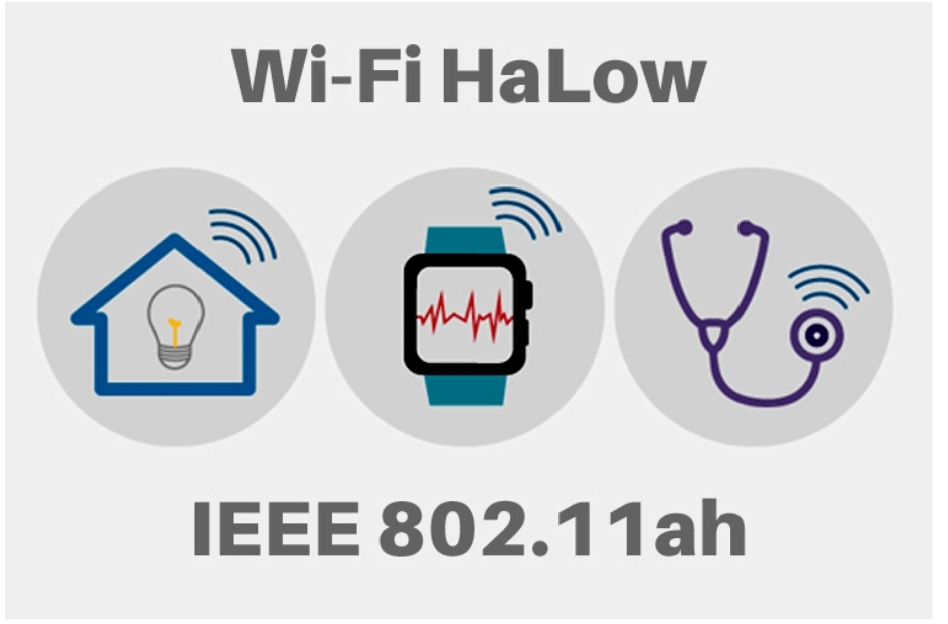Wi-Fi HaLow, based on the IEEE 802.11ah standard, was introduced by the Wi-Fi Alliance in 2016 to meet the increasing demands of the Internet of Things (IoT). Operating below the 1 GHz frequency, typically around 900 MHz, Wi-Fi HaLow offers significant advantages in terms of coverage and penetration capabilities compared to traditional 2.4 GHz or 5 GHz Wi-Fi technologies. Its signals can cover much wider areas, theoretically exceeding 1 kilometer, and can more effectively penetrate walls and other barriers.
Technical Advantages of Wi-Fi HaLow
1. Extended Coverage: One of the major selling points of Wi-Fi HaLow is its ability to cover distances up to 1 kilometer or more in open areas, making it ideal for applications like agricultural monitoring, industrial automation, and smart city initiatives.
2. Stronger Penetration: The lower frequency signals of Wi-Fi HaLow have better penetration capabilities, allowing them to pass through walls and other structural barriers more easily than the higher frequency signals used by traditional Wi-Fi.
3. Low Power Design: IoT devices, especially sensors and wearables, often need to operate on battery power for months or even years. Wi-Fi HaLow’s low power design helps these devices manage power consumption more effectively, thereby extending battery life.
4. Capacity and Compatibility: Wi-Fi HaLow can support a large number of devices connected to a single access point, up to four times that of traditional Wi-Fi access points. It also maintains compatibility with existing Wi-Fi technologies, which allows manufacturers to integrate HaLow into current products more easily, without needing to replace existing network equipment.
5. Security and Interoperability: Like other Wi-Fi versions, Wi-Fi HaLow supports the latest security standards such as WPA3 and AES encryption for secure data transmission. It is a globally recognized standard and can coexist with Wi-Fi 5 and Wi-Fi 6 networks, ensuring secure authentication and communication between connected devices.
Differences Between Wi-Fi HaLow and Other Wi-Fi Technologies
Compared to other Wi-Fi standards like 802.11a/b/g/n/ac/ax, Wi-Fi HaLow (802.11ah) is distinct in its design objectives and technical specifications. Here are some key differences:
Operating Frequency: Wi-Fi HaLow operates in the Sub-1 GHz band (902 – 928 MHz in the USA), unlike other standards that use 2.4 GHz, 5 GHz, and 6 GHz.
Channel Bandwidth Options: Wi-Fi HaLow offers bandwidths of 1, 2, 4, 8, and optionally 16 MHz, which are narrower than the 20, 40, 80, and 160 MHz bandwidths used by other standards.
Maximum Addressable Sites per Access Point: Wi-Fi HaLow can address up to 8191 sites per access point, significantly more than the 2007 limit of other standards.
Data Rate Range for a Single Stream MCS: While traditional standards offer 6.5 Mbps to 150 Mbps, Wi-Fi HaLow ranges from 150 Kbps to 86.7 Mbps, optimized for IoT applications.
Application Prospects of Wi-Fi HaLow
Wi-Fi HaLow’s unique capabilities make it suitable for a wide range of applications:
Smart Homes: Connecting various home appliances and sensors, even in areas like basements or far from routers.
Industrial IoT: Enabling remote monitoring and control of devices to enhance productivity and safety.
Smart Agriculture: Suitable for monitoring large agricultural fields for key metrics like soil moisture and temperature.
Urban Infrastructure: Useful in smart city projects for street lighting, traffic management, and public safety monitoring.
Remote Healthcare: Connecting medical devices for remote patient monitoring and data collection.
wi-Fi HaLow expands the boundaries of Wi-Fi technology, offering new possibilities for wireless connectivity in the IoT era. Its long-range coverage, low power consumption, and high-capacity connection features position it as a significant technology in the field of IoT. As the number of IoT devices continues to grow, Wi-Fi HaLow is expected to play an increasingly important role in the future wireless communication market.





